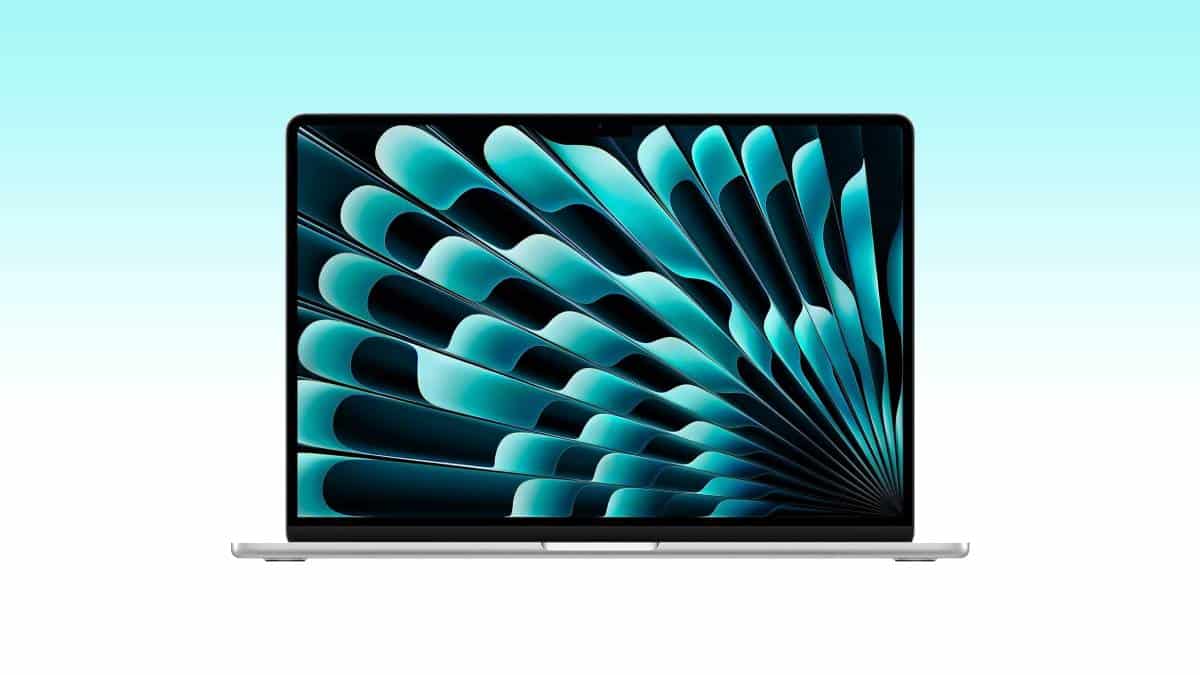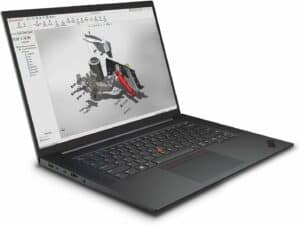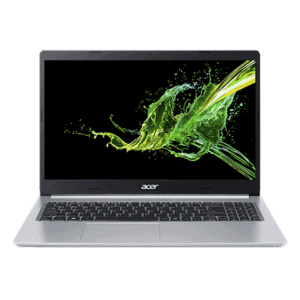Best laptop for computer science students in 2025 – our top picks

Table of Contents
If you are looking for the best laptop for computer science students, then we have you covered right here.
Whether you are a working professional or a student, if you are in the computer science industry, you will probably be dealing with applications like Adobe Illustrator, MATLAB, Autodesk, and more. Plus, you might be tackling coding and programming as well. And to ensure that your work goes uninterrupted, you need a powerful laptop.
A good laptop for your computer science-related tasks would have a powerful processor, a capable GPU, enough RAM, and should be portable. For instance, the Lenovo ThinkPad P1 Gen 6 has an Intel 13th gen processor and an NVIDIA 4000-series GPU, which makes it powerful. Plus, it weighs less than 4 pounds, which makes it portable.
With that being said, there are quite a lot of options to choose from. To help you narrow down your search, we have rounded up what we think are the best laptops for computer science.
Products at a Glance
How do we pick the best laptop for CSE (computer science) students
For this guide, our team of laptop experts has looked at several products, compared them, and picked the ones we thought were the best. For selection, we looked at specifications like performance, portability, and other important factors. Plus, we are always looking for new products to add to our lists – so do check back here for newer updates.
Product Reviews
- Powerful M2 Pro chip
- 16.2-inch Liquid Retina XDR display
- 22-hour battery life
- Expensive
If you want the absolute best laptop for computer science, then you should check out the Apple Macbook Pro (M2 Chip), which we think is also one of the best laptops for programming.
The 2023 iteration of the Macbook Pro is powered by an M2 Pro chip, which comes with 12 CPU cores and 19 GPU cores – so you can expect the laptop to handle demanding tasks well.
Further, you get up to 32GB of unified memory, which should be enough to speed up the overall performance. Plus, the 512GB SSD should be sufficient storage for most users. However, depending on your budget and requirements, you can go for an upgrade here.
As far as the display is concerned, you get a 16.2-inch Liquid Retina XDR display, which should deliver stunning picture quality. Plus, you get 1,000 nits of brightness as well as 1,600 nits of peak brightness, so you should be able to work on the laptop even in well-lit conditions.
If you want a portable machine, then this Macbook might be suitable for you. The laptop weighs only 4.7 pounds, which should make it one of the best lightweight laptops around. Plus, the Macbook promises a 22-hour battery life, which should give you at least a day’s worth of usage.
- Intel 13th Gen Core i7-13800H processor
- NVIDIA RTX 4080 graphics card
- 16-inch QHD display
- Expensive
If you are a computer science student, then we think that the Lenovo ThinkPad P1 laptop might be a good choice.
The laptop comes with a 16-inch display, so you should be able to get more viewing room than a regular 15.6-inch laptop. Further, much like some of the best 16-inch laptops, this one, too, sports a 1440p resolution, which should deliver better visuals than a plain FHD laptop.
The display also offers a 165Hz refresh rate, which is sufficient for getting faster frames for fast-paced games and movies. Plus, you also get 500 nits of brightness, which is sufficient for viewing in a well-lit room.
On the inside, the laptop runs on an Intel 13th Gen Core i7-13800H processor, which comes with 14 cores and has a max boost speed of 5.0GHz – so you can expect the laptop to handle demanding tasks efficiently.
Paired with it, you have the NVIDIA RTX 4080 graphics card, which is the “runner-up” to the powerful RTX 4090. With this, you should be able to breeze through tasks like 3D rendering or other graphically intensive tasks.
- 15.3-inch Liquid Retina display
- Powerful M2 chip
- 18-hour battery life
- Not suitable for gaming
If you want a budget laptop that does not compromise on performance, then we think that Macbook Air M2 might check a lot of boxes for you.’
To start with, the 2023 version of Macbook Air is powered by the M2 chip that features an 8-core CPU and a 10-core GPU, which should perform demanding tasks without a hitch. Plus, to speed up overall performance, you get 24GB of unified memory.
On the outside, the laptop sports a 15.3-inch Liquid Retina display, which should deliver high-resolution visuals. Plus, the display offers a P3 wide color gamut and 500 nits of brightness, which should give you accurate colors along with high brightness levels.
Much like some of the best battery life laptops, this Macbook has an impressive 18-hour battery life, which should last you all day. Plus, considering that this device weighs only 3.3 pounds, it should be easy to lug around for most people.
- 17.3-inch QHD display
- Intel Core i9-13900H processor
- NVIDIA RTX 4070 GPU
- Heavy
If you want the best Windows workstation for your computer science projects, then the MSI Vector GP77 might be a good fit. And we think it deserves to be one of the best MSI laptops for non-gaming purposes.
The laptop comes with a 17.3-inch display, which should give you a comfortable screen size for your workstation. Plus, the laptop has QHD resolution, which should give you better picture quality than an FHD display. The display also offers a 240Hz refresh rate, which is more than enough for most activities that need faster frame rates.
On the inside, the laptop runs on the Intel Core i9-13900H processor, which is the fastest processor in the Raptor Lake H-series lineup. It has a base speed of 2.6GHz and a max boost speed of 5.4 GHz, which should tackle multitasking as well as demanding tasks. Paired with it, you have the NVIDIA RTX 4070 GPU, which should deliver realistic-looking graphics for your video games.
For cooling, the laptop comes with the Cooler Booster 5 system that has 2 fans and 5 heat pipes in a shared pipe design, which promises to maintain optimal temperatures when your device experiences load.
As far as portability goes, the laptop is not very portable. The device weighs 9.2 pounds, which, considering the screen size, is not surprising. Further, you should get about 6 to 7 hours of battery life, which is not as long as some of the other options on this list.
- Intel Core i9-13900H processor
- RTX 4070 graphics card
- 17.3-inch QHD display
- Heavy
If you want a laptop for your science studies that has a powerful graphics card, then you should check out the MSI Vector GP77 laptop.
To start with, the laptop comes equipped with an Intel Core i9-13900H processor, which is one of the most powerful processors that can handle complicated tasks. With this chipset, you can expect
As far as graphics are concerned, the laptop has an NVIDIA GeForce RTX 4070 graphics card, which should be powerful enough to run heavy applications like AutoCAD. Plus, to maintain optimal performance and temperatures, the laptop comes with a chamber cooler on the CPU and GPU, which should cool down your device.
Coming to the display, the laptop sports a 17.3-inch display with QHD resolution, which should give you enough screen space for programming and other activities. Plus, you get a 240Hz refresh rate, which should give you a smoother experience.
How to pick the best laptop for computer science students
For a CSE student, the laptop is not just a device; it’s a primary tool for innovation, experimentation, and implementation. Hence, the choice of the laptop should hinge on its processing capabilities. With that in mind, here are a few pointers that you can consider while shopping –
Processor
If you want to carry out daily tasks like emailing or browsing, then entry-level processors like Intel Pentium and Celeron would suffice. However, considering that you would be performing tasks related to computer science, you should go for a more “mainstream” processor, like Intel Core.
With that being said, if you are looking to invest in a new laptop, we’d suggest going for one of the best Intel 12th gen laptops or the best Intel 13th gen laptops. These processors are the more recent ones, which means they have sufficient computing power to perform intense tasks.
GPU
Depending on the applications you are planning to use, you may need graphics power to process the graphics-intensive tasks. In that case, it would make sense to get a laptop with a dedicated GPU. For instance, most Intel 13th gen laptops are accompanied by NVIDIA RTX 4000-series graphics cards.
Portability
If you have to carry your laptop around, then you should consider getting one that weighs less and has a long battery life. For instance, the Apple Macbook Air M2 weighs about 3 pounds and has a battery life of 18 hours, which makes it quite portable.
Our Verdict
In the ever-evolving field of computer science, equipping oneself with a capable laptop is not just a luxury but a necessity. It’s evident that there’s no one-size-fits-all solution; the best laptop for a CSE student largely depends on their specific needs, preferences, and budget.
Whether you lean towards the impeccable craftsmanship and performance of Apple’s MacBook range, appreciate the robustness and reliability of Lenovo’s ThinkPad, or see value in Acer’s budget-friendly Aspire series, there are varied options to cater to every CSE student’s requirement. As technology continues its rapid pace, it’s crucial for students to invest wisely in a laptop that not only serves their present needs but also anticipates future demands.







